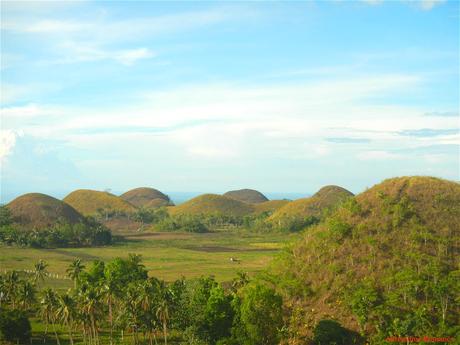
Call them underrated, but many of our country’s tropical islands are considered some of the most spectacular in the world. Each of our 7,107 islands has a mind-boggling array of stunning natural, historical, and cultural wonders. As Filipinos, we are definitely lucky because they are just in our backyard. In fact, many of the can be reached by single flights, bus rides, and ship trips. One of these islands is majestic and verdant Bohol, right in the center of Central Visayas.
After our Panglao island hopping adventure, we slept early knowing that we have a long day ahead. We woke up at 5AM to prepare for a long day ahead. It’s a good thing that our room has its own kitchen since we were able to prepare our own simple, hot breakfast.
After showering and checking out, we headed back to the Panglao to meet our guide and driver who will take us to various sites in Bohol.
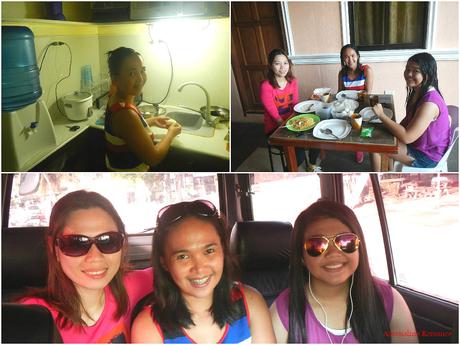
Bohol Bee Farm
Our first stop was a popular restaurant called the Bohol Bee Farm. The restaurant concocts and serves delicious, healthy, and organic meals using locally grown ingredients in their own farm. Of course, as a bee farm, they produce their own sweet, golden honey.
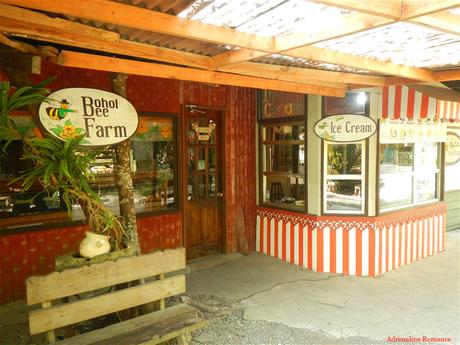
Jams, honey, spreads, teas, baked goodies, chips—these are just some of the delectable, healthy food items that you can purchase in Bohol Bee Farm. One of the nicest things about the restaurant is that they allow you to taste test their items before actually buying their products.
They also have soaps, shampoos, lotions, and other body products made from organic ingredients.
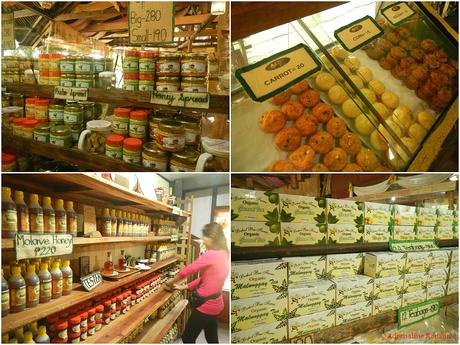
Don’t you just love eating your breakfast, merienda, or lunch with this stunning view like this in front of you? Well, that’s exactly what you’ll get in Bohol Bee Farm. Their restaurant is perched high above a rocky cliff, which allows you to enjoy great views and breathe the fresh sea air.
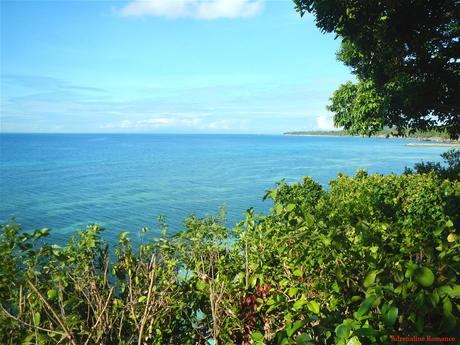
You are definitely familiar with the usual vanilla, strawberry, chocolate, cookies and cream, etc. ice cream. But have you ever tasted healthy, organic malunggay (moringa or leaves from a horseradish tree), ginger, guyabano (soursop), and ube (purple yam) ice cream? Well, that’s what we ordered.
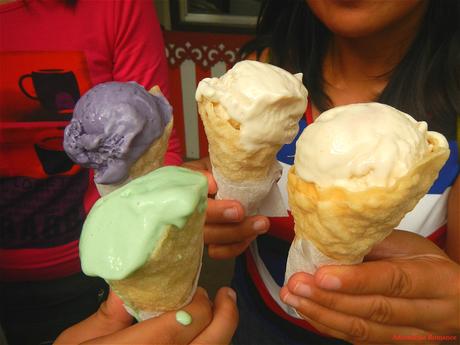
Mmmmm! These organic ice creams are some of the best-tasting and unique ice creams we ever had! I personally like the ginger ice cream; it is cool ans sweet in the mouth but has a surprisingly spicy aftertaste in the throat.
The cones are not made of usual grain flour. They are made of crispy, flavored cassava flour.
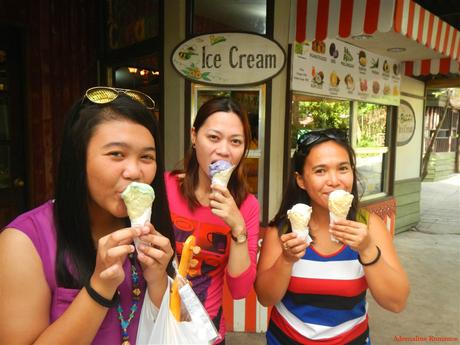
After purchasing some food and pasalubong, we strolled around the restaurant’s property. This is where they grow their fruits, vegetables, herbs, root crops, and spices. Thus, you are assured that your order will be farm-fresh!
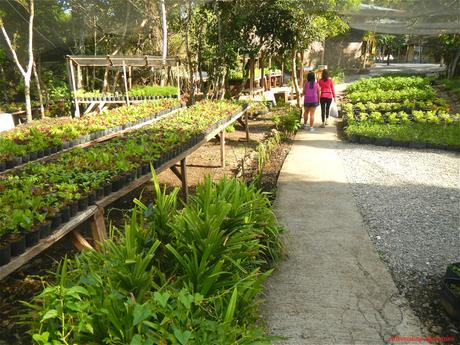
On one side of the property is a small “factory” where high-quality handmade trinkets, mats, home decors, and souvenir items are made. This lady is weaving a beautifully patterned table mat using a traditional loom.
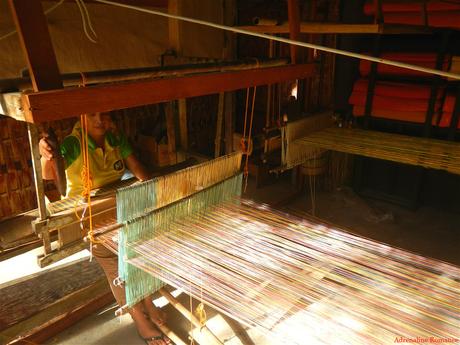
Sandugo Blood Compact Site
After an hour, we were back on the road and crossed the causeway that connects Panglao and Bohol mainland. A short distance from the causeway is this the historic Sandugo Blood Compact monument and marker.
This is the site of one of the most significant events in Philippine history when local native chieftain Datu Sikatuna made a blood compact with Spanish conquistador Miguel Lopez de Legazpi on March 16, 1565. The ceremony cemented their friendship and cooperation with various endeavors.
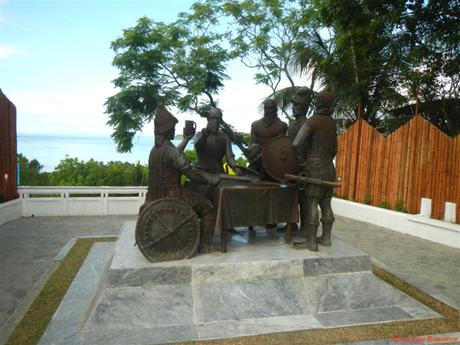
Visitors are treated to a wonderful vista of Panglao and the adjacent channel. We can just imagine how wild this location is in centuries ago.
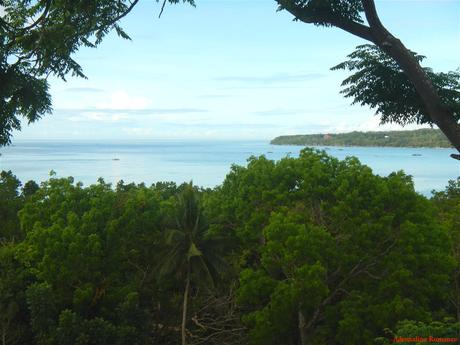
Our next stop was in Alburquerque, or Albur for short, a small municipality beyond the boundaries of Tagbilaran. Along the way and during our onging trip to Tubigon, we encountered ancient Spanish-era churches that were severely damaged or destroyed during the 7.2-magnitue 2013 Bohol earthquake. We are not religious, but our hearts broke upon seeing these devastated cultural and historical heritage sites.
The local government has begun the reconstruction of these churches to their former glory. This is foreseen to be a long and painstaking process as the original stones are going to be reused.
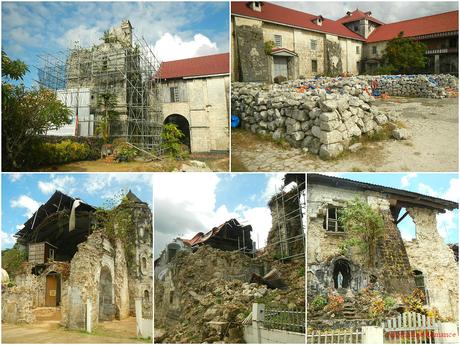
Albur Calamay Manufacturing Plant
It took us quite some time to find our next destination. In fact, we didn’t know that we passed by the Albur Calamay Manufacturing facility by a kilometer! It turned out that their signage was not facing the road; that’s why we weren’t able to spot it right away.
It is refreshing to know that Bohol is going full throttle in promoting historical, cultural, adventure, and eco-tourism tourism in their area.
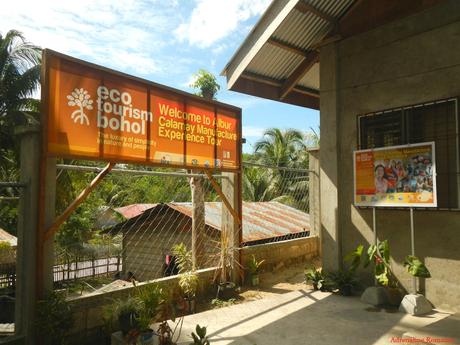
The calamay manufacturing plant is quite small but very clean and well arranged. To maintain the cleanliness of the place, guests are required to take off their shoes and slip on some rubber shoe-sandals that the facility provides.
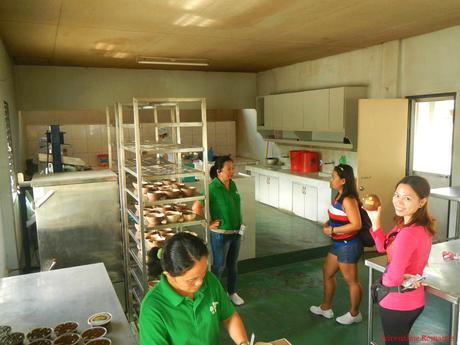
Bohol is known for its delightfully sweet calamay, which is a viscous, thick, and sticky delicacy made of coconut milk, brown sugar, and glutinous rice. They can be eated straight from its container, or used as a spread, sweetener, or garnish for other delicacies. It is a very popular pasalubong.
Traditionally, calamay is packaged and served in empty coconut shells. Nowadays, they are also placed in plastic tubs for convenience. Calamay is among our favorite native desserts.
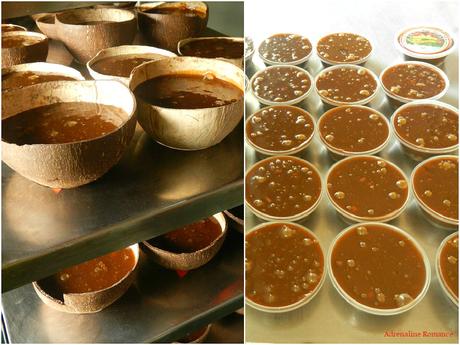
How is calamay made? It involves two separate cooking segments. First, glutinous rice, locally known as pilit, is thoroughly washed then added to coconut milk. The mixture is then ground into a paste. Second, a generous amount of brown sugar is added to a second batch of coconut milk. This mixture is boiled for several hours to produce a sweet syrup called latik. The pilit-coconut milk paste is then poured into the latik.
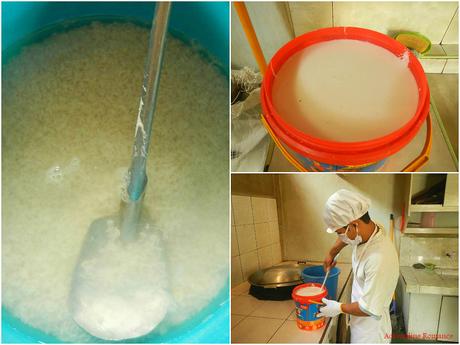
Now, here comes the extremely labor intensive part. The concoction is then stirred nonstop until the mixture becomes extremely thick. Yes, this action has to be done nonstop to avoid burning the calamay and to retain the viscous consistency. The guide told us that stirring the mixture can take anywhere between four to six hours!
If that doesn’t sound crazy, take note the calamay becomes harder to stir as it thickens. Yes, it’s a total whole-day workout!
By the way, the stove and counter may look modern, but that is actually wood-fired! The Albur Calamay Manufacturing facility insists on cooking calamay the old fashioned way to retain the cultural essence of the delicacy.
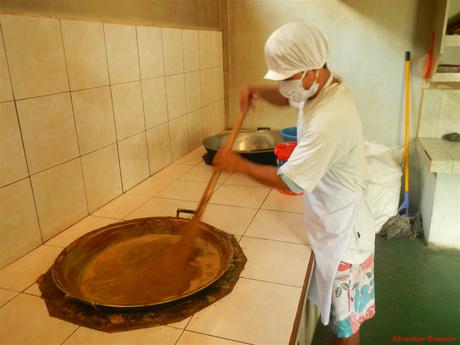
Aside from the traditional brown calamay, natural flavoring such as ube may also be added. So, the next time you eat calamay, know that you are actually enjoying a true labor of love.
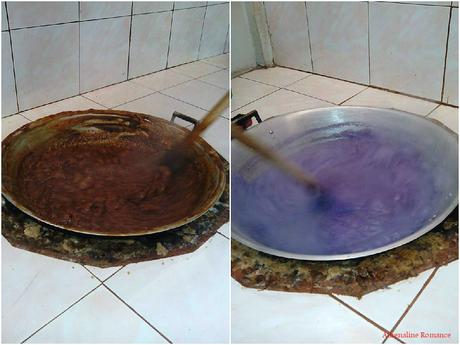
The Albur Calamay Manufacturing facility gets a lot of orders from various clients every day. Although they want to retain the ancient and traditional way to whip up this dessert, they need to utilize machinery to make the process more efficient to satisfy all those orders.
To speed up the process, modern machines are used to grate the coconut and to grind the pilit-coconut milk mixture.
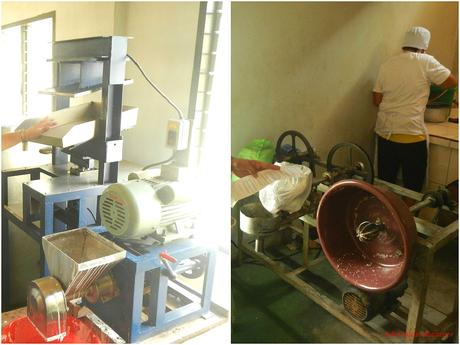
As we mentioned before, calamay is traditionally packaged in coconut shells. After filling both halves of the shell, they are sealed with thin papel de japon (Japanese paper). They use some of the leftover, sugarless pilit-coconut milk mixture as an organic, edible glue to seal the package.
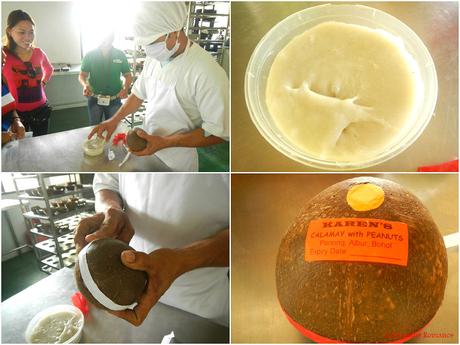
After buying a few calamay pasalubongs, we proceeded to our next destination in Loay River where we took our lunch. This unique lunch deserves a separate blog post.
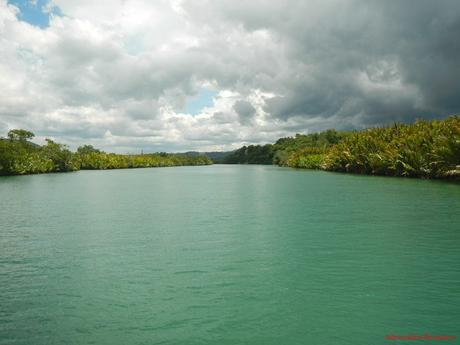
Bilar Man-Made Forest
After having lunch, we proceeded to our exit point in Tubigon. Along the way, we passed by protected Bohol Man-Made forest in Carmen. The two-kilometer wooded area is a successful reforestation project initiated by scouts, locals, students, volunteers, and other people in the 70s during the Marcos years. Reforestation was direly needed in response to the massive damage done to the watershed caused by slash-and-burn (kaingin) system.
Tourists usually stop by the highway to have their photos taken with a lofty tunnel of trees above them. Of course, they have to scramble out of the way when motorcycles, cars, and buses come speeding along the road. Watch out for the bus, Sweetie and Aivy!
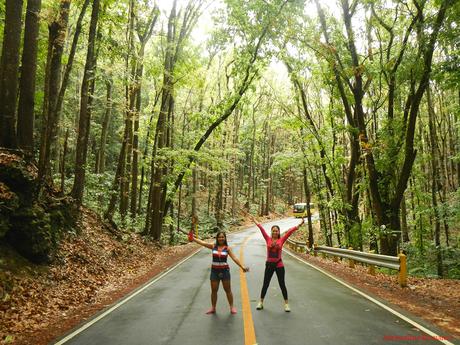
Most of the trees that are planted in the man-made forest are mahoganies, which are not native to the land. We’re not sure if there are indigenous trees here.
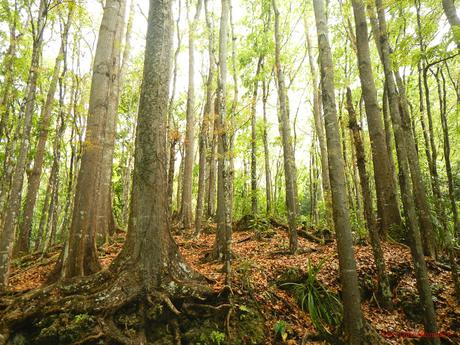
The uniquely designed Shiphaus, owned by local mariner Capt Gaudencio Dumapias, is a popular attraction in the town of Batuan. It is originally a house that has been converted to a small museum that showcases local culture and heritage.
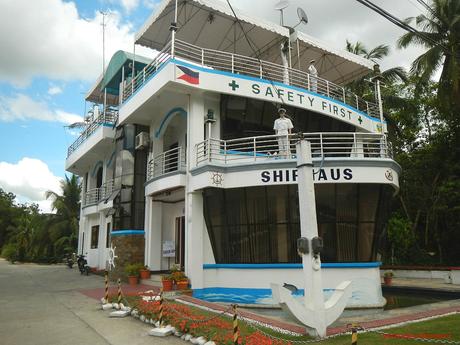
Chocolate Hills Adventure Park
Our next stop is a newly established adventure park in Barangay Buenos Aeres. The park is named Chocolate Hills Adventure Park (CHAP), which is named after Bohol’s most famous natural wonder. CHAP offers a lot of exciting adventures for outdoor enthusiasts.
Their website lists a lot of adventures, but since we were pressed for time, we just decided on one.
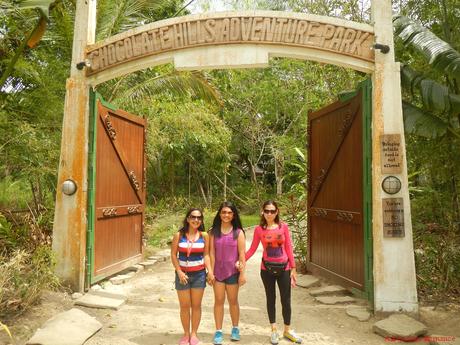
A guest’s adventure starts in a well-appointed visitor’s center that stands on a man-made pond. The center has a restaurant, function area, fish-feeding lagoon, and more.
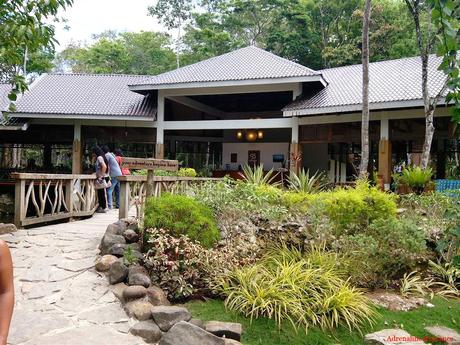
(Photo credit: Aivy Franco)
After registering ourselves, we proceeded to the orientation area for a short briefing on the Bike Zip, the park’s most popular attraction. We’ll get into that in a little while.
Directional signs help guests find their way around the park.
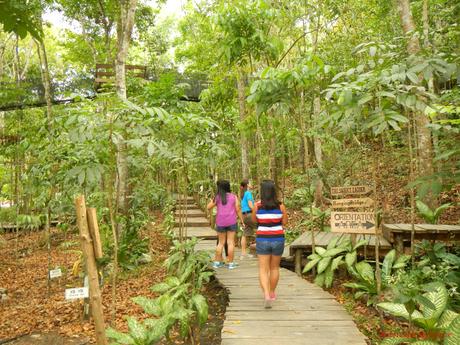
On our way to the Bike Zip staging area, we crossed this hanging bridge. It was really fun walking on something that sways with every step. I teased Alexa and Aivy by treading heavily on the bridge, making the structure sway violently. Hehehe!
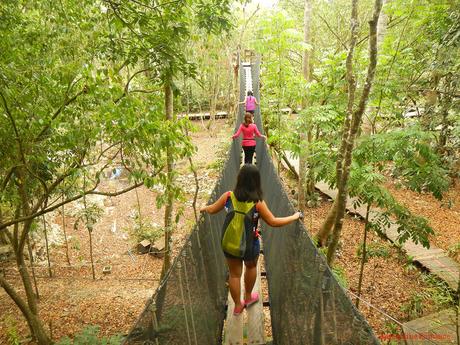
Below the bridge is a nice wooden pathway that leads to other attractions in the park.
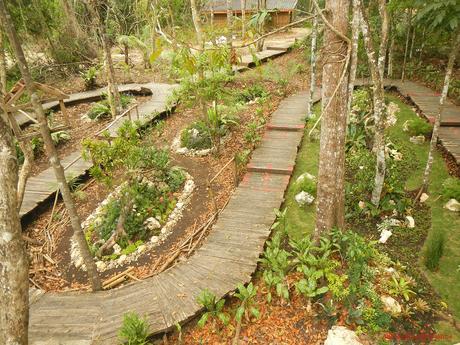
We climbed a steep, forest-covered hill and found this tall steel tower. This is the staging area of the Bike Zip.
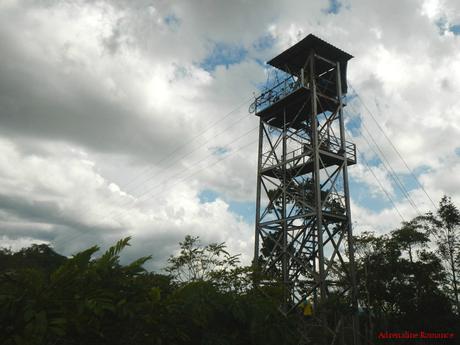
Sheila and I decided to let Alexa and Aivy experience the Bike Zip. To prepare them for the adventure, they were fitted with high-quality safety equipment. Check out those Petzl harnesses and helmets.
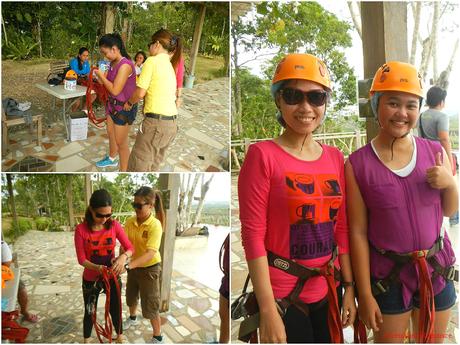
So what exactly is the Bike Zip? Well, it’s like a standard zip line only you don’t sit down on a harness. Rather, you ride a specially modified bicycle on the line! Yes, you do a balancing act a hundred feet off the ground while pedaling yourself from one tower to another. The thing is, you won’t go anywhere unless you pedal.
The entire round trip is 550 meters or half a kilometer. You bike from one hill to another and back.
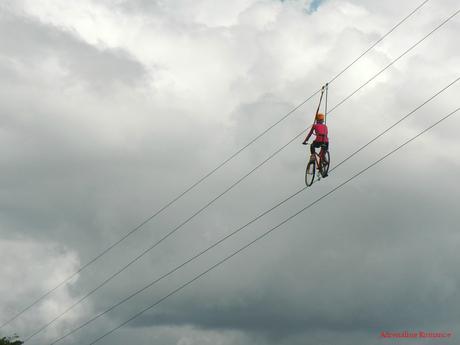
This is the first adventure of its kind in Bohol. Now, with all the safety features, this might seem to be easy peasy. But for many, riding a precariously balanced bike high up on a thin cable requires every bit of courage of willpower. In fact, Alexa came down and wept out of fear. But later, we successfully coaxed her to undertake the adventure. She came out with flying colors!
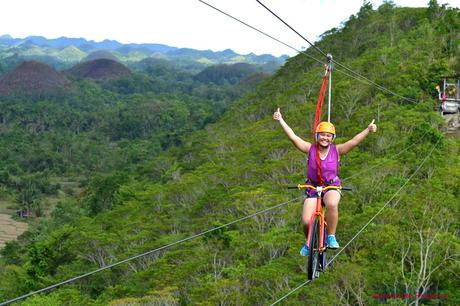
(Photo credit: Aivy Franco)
Aivy was also very reluctant to ride the wire; yup, she’s afraid of heights. Hehehe! But later, she decided to give it a go. We congratulated her for a great ride.
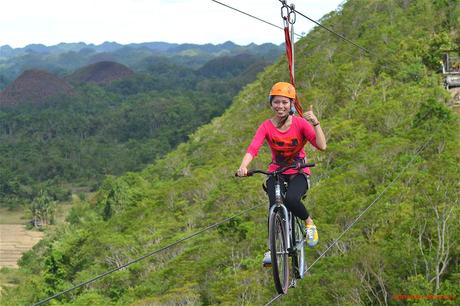
(Photo credit: Aivy Franco)
While Aivy and Alexa were enjoying the Bike Zip, Sheila and I were awed over the beauty of Chocolate Hills, Bohol’s world-renowned tourist attraction. These are unique geological formations of haycock hills that are actually grass-covered limestone. During summer season, the sun’s heat causes the grass to wilt, giving the hills their characteristic chocolaty brown color.
In all, there are around 1,776 virtually identical hills which are distributed in an area of 50 square kilometers. That covers 6 municipalities in central Bohol.
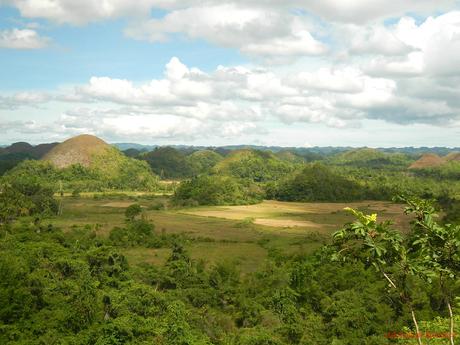
Sagbayan Peak
Nearing our exit point of Tubigon, we stopped by Sagbayan Peak, a popular observation platform that gives visitors an encompassing view of the Chocolate Hills and surrounding areas.
This menacing dinosaur guards the area, so you better watch your manners. Else, he will eat you!
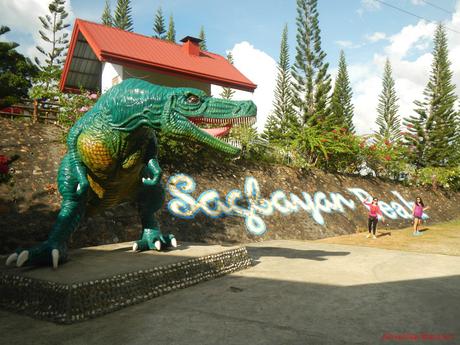
Cross out the object that does not belong to the group. Hehehe! Sagbayan Peak is also a nice place for children to enjoy as they have playgrounds and statues of popular cartoon characters.
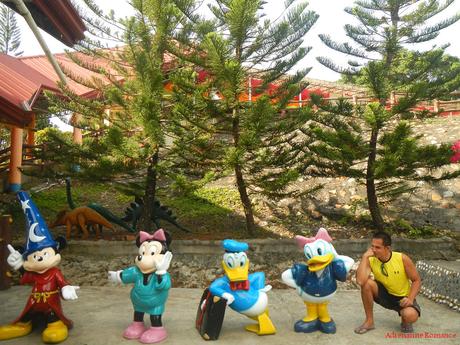
The base of Sagbayan Peak houses a small tarsier conservatory. Philippine tarsiers, which are near threatened, are tiny nocturnal and insectevorous primates. Their most striking feature is their huge eyes, which are disproportionate to its small size. In fact, the tarsier has the largest body-to-eye ratio of any mammal on earth! Those large eyes provide the animal with excellent night vision.
Tarsiers are very sensitive to light, so flash photography is strictly prohibited.
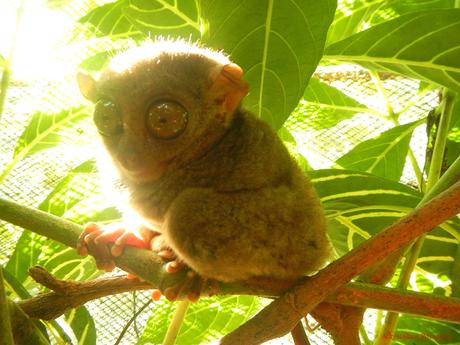
It’s a long walk to Sagbayan’s Peak viewing deck, but it’s definitely worth it. The crosses and markers along the walkway meant that this is a place of worship for religious pilgrims.
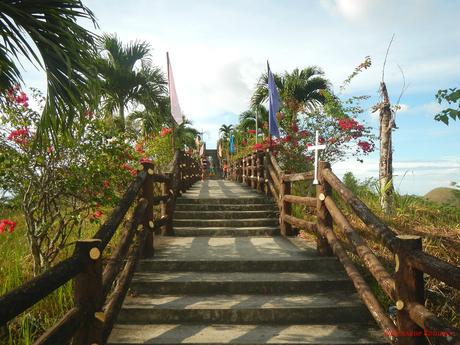
At last, we reached the viewing deck. Behind us is the full glory of the Chocolate Hills and the cerulean sea that separates Bohol and Cebu. The Chocolate Hills has been declared as a National Geological Monument in June 1988 in recognition of its scientific importance, scenic value, and geological uniqueness. It is also declared as a protected area under the National Integrated Protected Areas System of the DENR.

Don’t be surprised if you find farms and houses around this national monument. Flatlands around around the hills are used as agricultural, residential, and commercial lands for hundreds of years. But despite the legal protection, we saw a few hills being quarried for limestone.
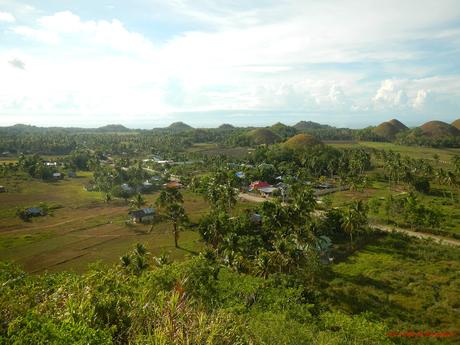
Sagbayan Peak is a scenic mountain resort that, aside from a viewing deck, also has other recreational facilities. It has a swimming pool complex, butterfly dome, playground, park and more. Don’t miss visiting Sagbayan Peak when you visit Bohol.
There are also plans to develop a 100-hectare 18-hole golf course in the area. Hopefully, if such plan materializes, it won’t compromise the Chocolate Hills.
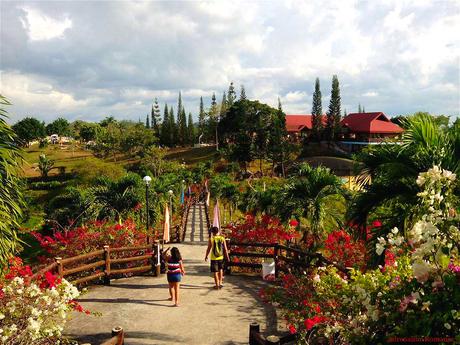
(Photo credit: Aivy Franco)
After taking a few pictures at the observation deck, Sweetie and I decided to check out the playground. On the other hand, Aivy and Alexa visited the butterfly dome where they played around with the a variety of species of delicate butterflies that flit around the enclosure.
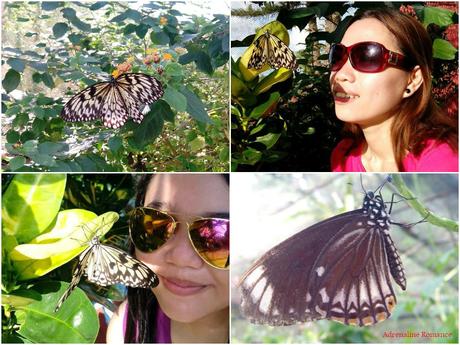
(Photo credit: Aivy Franco)
Even though she’s running 13 and at the verge of becoming a real teenager, she still has the heart and soul of a child.
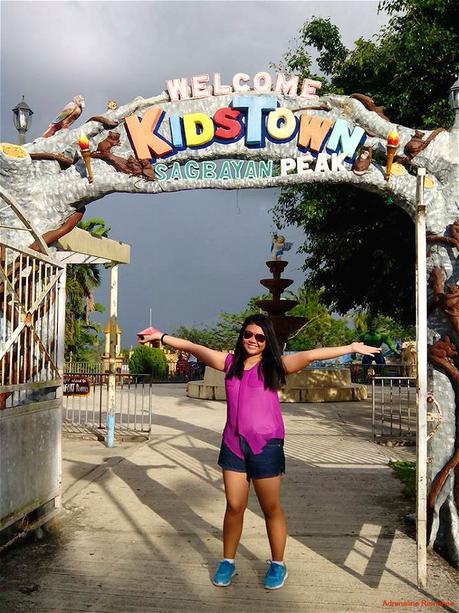
(Photo credit: Aivy Franco)
In our mid-life years, our knees sometimes wail in complaint. It was rather an exhausting trip, so Sweetie and I decided to relax in Sagbayan Peak’s park. Check out those tall pine trees.
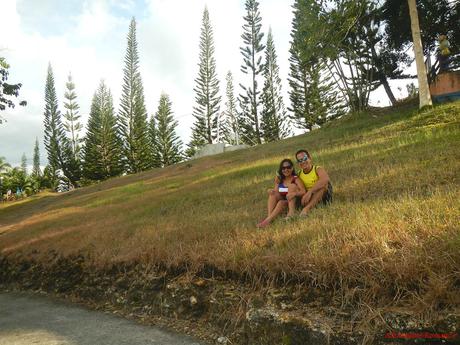
Soon, at around 5 PM, we reached the nearby town of Tubigon where we plan to take a fastcraft back to Cebu.
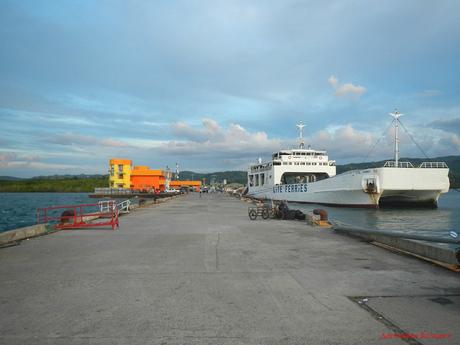
Tubigon offers an excellent vantage point to watch a fiery sunset. With lots of people relaxing on the port and the occasional fisherman plying the waters to catch an evening meal, this scene reminded us of our childhood when things used to be simple and when fun meant enjoying simple things in life.
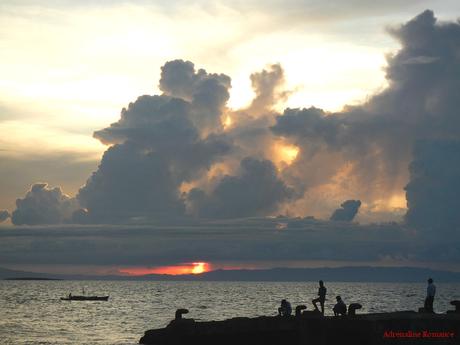
Our weekend visit in Bohol was truly awesome and, best of all, easy on the wallet. A perceived shortage of money or an unreasonable fear of uncertainty should not be a deterrent in traveling and engaging in adventures. Remember that some of the most beautiful places in the country—and perhaps the world—are just right there in our backyard. All we need to do is to take a first step, have the drive to be curious, and exhibit an appreciation of simplicity.
Tips to follow

